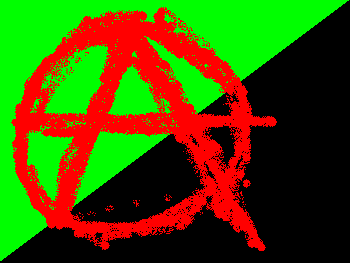A western redcedar stands barely six feet outside my second-floor office window, its trunk denuded of branches on the side facing the building. It presents a lonely and spindly presence, forced to accommodate a site far removed from its preferred forest habitat.
Despite its name, it is not really a cedar, but a member of the cypress family, and an entirely different genus from the true cedars found to the north and east of the Mediterranean, the trees of the mythical forest that blanketed the lands around ancient Sumer, the forest that was home to the monster Humbaba in the tale of Gilgamesh.
Like its namesake in the Lavant, however, the cedar outside my window is an intensely social tree, with a strong inclination to congregate in clusters with others of its kind, its roots intertwined with its neighbors and its branches collecting with theirs into a tall, gloom-casting canopy over a thick floor of fragrant brown sprays where little else grows, a rarified space surrounded by a gradually increasing population of squat, shade-adapted understory plants, forming a dimly lit cathedral where all the furniture has been piled into the periphery.
Along the ground below my window the transition zone between building and tree is the antithesis of a cathedral, bright and narrow and cluttered, a flat, thinly mulched space dotted with “ornamental” plants (ornamental being horticulture-speak for plants indigenous to someplace else, or plants that have been modified through selective breeding into something barely resembling their indigenous forms, or both of these). The mulched space ends abruptly a few short feet from the cedar’s trunk, and becomes first a heavily weathered concrete curb bespeckled with chipped yellow caution paint, and then a curved lane of asphalt connecting two parking areas.
The view through the window, through the just barely discernible ultraviolet tinting of the glass and across six feet of visually unoccupied airspace to the curling coils of peeling bark on the branchless side of the trunk, is not entirely transparent, with reflected echoes of nearby objects in the room around me. And there is something about the nearness of the tree and the faint reflection of the office interior that renders the above-ground transition on my side of the window intolerably immediate.
This midair transition zone is easily dismissed as trivial. What is there of importance that could flourish in the emptiness between the upper regions of terrestrially-rooted objects? But the space between the window and the tree is not empty; for all of its airiness, it is nonetheless alive with potential, a space of communication and transit and a venue for activities of immensity and necessity. It is a space filled with flying and floating and drifting things. It is a world of birds. It is a world of spider silk. It is a world of tiny winged creatures who dance in and out of the tree’s shadow. It is a conduit for wind-blown seeds and pollen, a channel for the transmission of pheromones and gasses, a medium for countless unseen signs and signals.
The zone is reduced to a strictly visual world from my insulated perspective. All external sounds are muffled by the building’s exterior wall, and the tangy astringent fragrance of cedar is blocked entirely. Everything on my side of the glass is calm and still in both their solid and reflected forms. But the cedar and the branches of a more distant oak and the tops of trees beyond them are in perpetual and unpredictable motion on this particularly cold and breezy spring afternoon.
The transition is as much psychological as it is physical, as much active mental presentation as passive sensory experience. The physical separation between inside and outside makes the world through the glass into a virtual world, a world experienced in real-time but semi-vicariously, a world in which I am not a wholly engaged participant, a world I can fully inhabit only through imaginative projection, through my body’s memory of bitter spring breezes upon the skin of previous versions of me.
Yet even for the me who is present now, the ephemeral space between the glass and the cedar is a crowded place. There are things in my memory that find this space particularly abundant, despite its apparent emptiness—because of its apparent emptiness. It is a field of affordances, a chasm that begs to be traversed, a threshold that beckons. My eyes reach through the window and grasp hold of what my hands cannot.
And in a similar way, with what I write here, my thoughts reach out, refracted into the shape of words that collect in stacked rows across the screen in front of me, toward a world in which words on screens and office windows—and buildings next to cedar trees—are entirely unnecessary.




